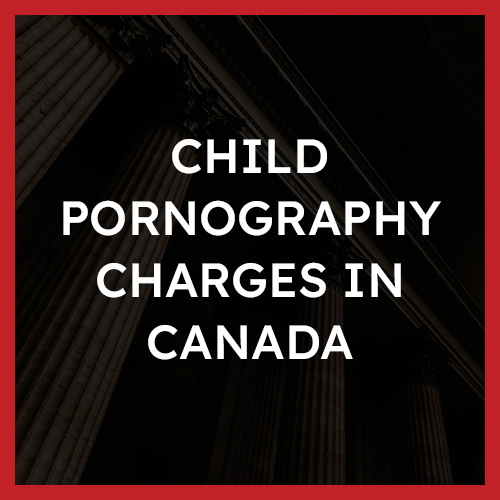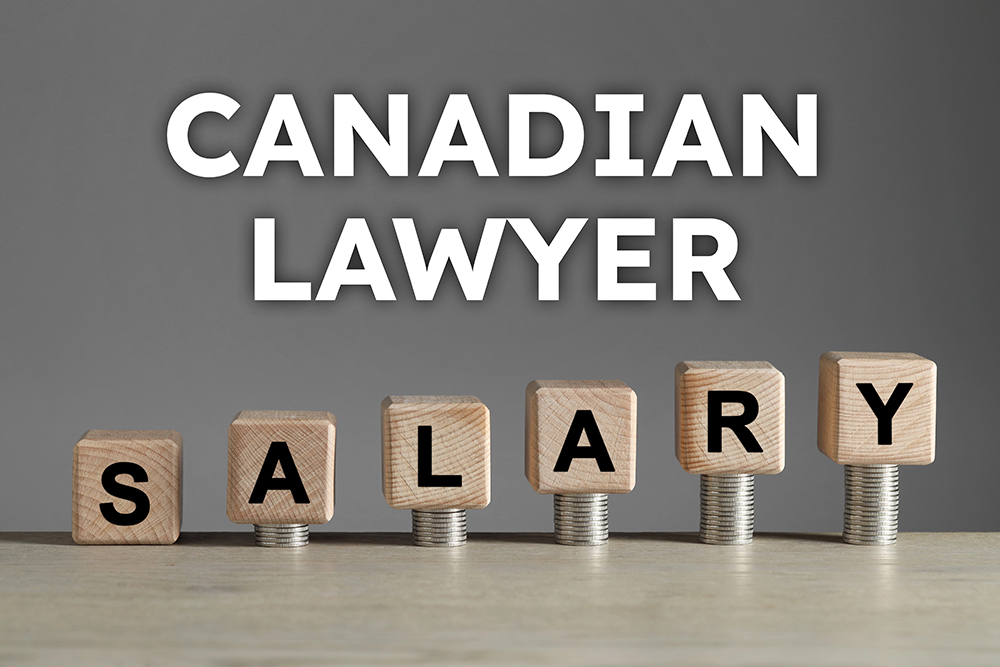Child Pornography Laws in Canada

This severe offence is classified in Canadian law as an offence “tending to corrupt morals.”
There are four primary offences within the parameters of child pornography covered by the Code:
- Accessing child pornography;
- Possessing child pornography;
- Distributing child pornography; and
- Making child pornography.
All four offences carry lengthy maximum sentences. Distributing and making child pornography also carries minimum sentences. In addition, a sentence will be increased if the offence was committed with the intent to make a profit.
Statistics Canada indicates that the COVID-19 pandemic has intensified the rate of child pornography offences. In particular, 2020 statistics indicate a 27% increase in making or distributing child pornography from 2019. Possession or accessing child pornography is also up 19 percent.
Across Canada, provinces and municipalities have dedicated sections of their police force to investigate and charge individuals suspected of engaging with child pornography.
This includes:
- The Internet Child Exploitation Unit (ICE) in Alberta integrates the RCMP, Calgary Police Service, Edmonton Police Service, Lethbridge Regional Police Service and Medicine Hat Police Service;
- The Internet Child Exploitation Unit (ICE) in Saskatchewan, which integrates the RCMP, Regina Police Service, Saskatoon Police Service and Prince Albert Police Service;
- The Integrated Child Exploitation Unit (ICE) in British Columbia; and
- The National Child Exploitation Crime Centre (NCECC) was formed by the RCMP to address the sexual exploitation of children Canada-wide.
Examples
The offence of child pornography is wide-ranging and covers many offences. Some of these include:
- Downloading child pornography onto a computer from a website;
- Viewing child pornography on a computer from a website;
- Taking sexually explicit images or video content of a minor; and
- Sending sexually explicit images or video content of a minor to others or uploading to a website.
Defences
No two cases are alike. A defence that may be available in one case may not be available in another. The strength of any defence rests on the evidence against you and the precise details of the allegations.
Child pornography charges are taken extremely seriously, however, there are defences available.
Some of the most common defences include:
- Not knowing that the child depicted in the material was under 18;
- If the material was produced for a legitimate purpose such as for medical or educational reasons;
- If the police violated your Canadian Charter of Rights and Freedoms (“Charter”) rights in gathering evidence against you. For example, if the search of your property which led to the discovery of the material was illegal.
Regardless, defending yourself against these types of charges is an uphill battle that requires a seasoned and experienced defence lawyer on your side.
Punishments
Each type of child pornography offence has its own associated penalties:
- Making and distribution of child pornography are straight indicatable offences, which are more severe and carry a minimum and maximum jail term.
- Possession and accessing child pornography are hybrid offences, meaning that the Crown can elect to proceed by way of indictment or summary offence. This choice will impact the severity of punishments that you are given, with indictment being the more severe of the two.
Due to the seriousness of these charges if you are found guilty you can likely expect a term of imprisonment. This can be anywhere from 1 year to 14 years, or more, depending on the circumstances and the charge. Having a highly experienced lawyer can make a big impact on what a term of imprisonment may look like if you are convicted.
Overview of the Offence
The relevant provision for child pornography in the Code is 163.1 (1):
163.1 (1) In this section, child pornography means
(a) a photographic, film, video or other visual representation, whether or not it was made by electronic or mechanical means,
(i) that shows a person who is or is depicted as being under the age of eighteen years and is engaged in or is depicted as engaged in explicit sexual activity, or
(ii) the dominant characteristic of which is the depiction, for a sexual purpose, of a sexual organ or the anal region of a person under the age of eighteen years;
(b) any written material, visual representation or audio recording that advocates or counsels sexual activity with a person under the age of eighteen years that would be an offence under this Act;
(c) any written material whose dominant characteristic is the description, for a sexual purpose, of sexual activity with a person under the age of eighteen years that would be an offence under this Act; or
(d) any audio recording that has as its dominant characteristic the description, presentation or representation, for a sexual purpose, of sexual activity with a person under the age of eighteen years that would be an offence under this Act.
Making child pornography
(2) Every person who makes, prints, publishes or possesses for the purpose of publication any child pornography is guilty of an indictable offence and liable to imprisonment for a term of not more than 14 years and to a minimum punishment of imprisonment for a term of one year.
Distribution, etc. of child pornography
(3) Every person who transmits, makes available, distributes, sells, advertises, imports, exports or possesses for the purpose of transmission, making available, distribution, sale, advertising or exportation any child pornography is guilty of an indictable offence and liable to imprisonment for a term of not more than 14 years and to a minimum punishment of imprisonment for a term of one year.
Possession of child pornography
(4) Every person who possesses any child pornography is guilty of
(a) an indictable offence and is liable to imprisonment for a term of not more than 10 years and to a minimum punishment of imprisonment for a term of one year; or
(b) an offence punishable on summary conviction and is liable to imprisonment for a term of not more than two years less a day and to a minimum punishment of imprisonment for a term of six months.
Accessing child pornography
(4.1) Every person who accesses any child pornography is guilty of
(a) an indictable offence and is liable to imprisonment for a term of not more than 10 years and to a minimum punishment of imprisonment for a term of one year; or
(b) an offence punishable on summary conviction and is liable to imprisonment for a term of not more than two years less a day and to a minimum punishment of imprisonment for a term of six months.
It is critical to remember that in Canada it is your constitutionally protected right to be presumed innocent until proven guilty. This means that the Crown must prove all elements of the offence beyond a reasonable doubt for you to be convicted. If a doubt can be raised that you did not complete the physical or mental components of the offence (as described below) the Crown will not be able to secure a conviction against you.
The Guilty Act (Actus Reus)
The actus reus for child pornography requires that to be found guilty, the Crown must prove beyond a reasonable doubt one of the following:
- You observed child pornography; or
- You possessed or downloaded child pornography; or
- You transmitted, made available or exported child pornography; or
- You made, printed, or published child pornography; or
- You possessed child pornography for the purpose of transmitting, making available or exporting.
The Guilty Mind (Mens Rea)
In addition to the actus reus, the Crown must also prove beyond a reasonable doubt the mental elements of the offence including:
- You intended to make, download, view, or export child pornography; or
- You knew or were wilfully blind as to the content of the material.
It is important to note that actual knowledge is not required for this offence. It is also not considered an excuse for an individual to be “willfully blind” as to whether the material would be considered child pornography.
Wilful blindness describes a situation where a person attempts to avoid a criminal charge or liability by intentionally keeping themselves unaware or “blind” as to the facts. In this instance, that the individual was a minor.
Child Pornography Defences
How to Beat a Child Pornography Charge
As previously mentioned, every case is different. There is no single defence that can be applied to every allegation of child pornography. That said, there are numerous defences available that when used effectively can significantly and positively affect the outcome of a case.
In general, the best defences are:
Legitimate Reasoning & No Undue Harm
Section 163.1(6) of the Code states that if the material in question was produced for a legitimate reason related to the administration of justice, science, medicine, education or art; and it does not pose an undue risk of harm to minors, then you cannot be convicted. The court will assess the connection between the material and the purported legitimate purpose. However, even where the purpose is legitimate, the Court can still convict if it poses undue risk of harm. If a reasonable person looking at the material would determine that it creates an objectively ascertainable risk of physical or psychological harm to children, this defence is not available.
Lack of Knowledge
Another common defence to a child pornography charge is to argue that you did not know that the person depicted was under 18 years of age. If you can demonstrate that you took all reasonable steps in the circumstances to ensure that the person was at least 18 years of age, this can aid your case. A failure to do so, according to section 163.1(5) of the Code, can ultimately result in your conviction.
Lack of Control
If you have been charged with possession of child pornography, you may be able to argue that you did not have the level of control required to be found guilty of a possession offence. Because possession in the law requires that you have control over and knowledge of the item in question, you can argue that simply viewing pornography stored in a location on the internet is not enough for you to be found guilty of possessing the content. However, bear in mind that you can still be found guilty of the offence of accessing child pornography.
Innocent Possession
If you possessed child pornography for the sole purpose of delivering it to authorities or destroying it, this could aid your defence as it would assist in challenging the mental element of the offence.
Private Use
This defence is available where you can prove that the materials in question pose a nominal risk to the child, they depict lawful sexual activity, they were made with the consent of all parties involved, the consent was not coerced, the material is in possession of its creator or the participant of the sexual activity, and the material was held for private use.
Violation of Constitutional Rights
The Charter sets out your rights before and after your arrest. If the police fail to abide by these rights, it could aid in your defence. In child pornography cases, this typically arises as an unlawful search and seizure. If successful, the evidence in question will be excluded from the case, making it difficult or impossible for the Crown to prove beyond a reasonable doubt that you committed the offence.
While the Crown must prove the elements of the offence beyond a reasonable doubt, you bear the responsibility of raising certain defences at trial. The burden of proof is high for this kind of prosecution. This means that there are many successful defence strategies that our experienced defence lawyers can employ, depending on the circumstances of your case.
Our lawyers have significant experience assessing the availability and strengths of various potential defences in child pornography cases, as well as presenting any and all available defences to the court at trial. Even if you believe that you will be found guilty, it is important that you obtain a legal opinion about defences that may be available to you.
Child Pornography Punishment
As mentioned, punishments for child pornography are serious and will very likely include a term of imprisonment ranging from 1 to 14 years. The Code provides both minimum and maximum punishments for this offence as follows:
Accessing child pornography
- Indictment: Mandatory minimum punishment of 1-year imprisonment, not exceeding 10-years.
- Summary: Up to 2 years’ less a day imprisonment and a $5,000 fine.
Possessing child pornography
- Indictment: Mandatory minimum punishment of 1-year imprisonment, not exceeding 10-years.
- Summary: Up to 2 years’ less a day imprisonment and a $5,000 fine.
Making child pornography
- Indictment: Mandatory minimum punishment of 1-year imprisonment, not exceeding 14 years.
Distributing child pornography
- Indictment: Mandatory minimum punishment of 1-year imprisonment, not exceeding 14 years.
There are several aggravating factors which will increase the likelihood and amount of jail time an individual may face including:
- Being caught in possession of a large volume of pornographic materials;
- If the children depicted in the material are very young;
- If the accused played a significant role in producing the material; and
- If the accused intended to profit from the material.
In addition to your sentence, you are likely to receive a number of ancillary orders, including:
- An order to forfeit any property related to the offence; and/or
- An order restricting your ability to frequent places where you are likely to interact with minors under the age of 16.
If you have been convicted of making, possessing or distributing child pornography, you will also receive an order to register with the National Sex Offender Registry in accordance with the National Sex Offender Information Registry Act (SOIRA).
As a registered sex offender, you will have to provide the police with personal information including:
- Where you live;
- What vehicle you drive; and
- What you do for work.
A conviction for child pornography will result in a mandatory minimum 10-year SOIRA order for just one offence, which can have significant and overwhelming consequences for your future.
Under a SOIRA order you are required to report to the Sexual Registry anytime you:
- Change your address or place of residence;
- Change employment or volunteer positions; or
- Travel internationally for more than 7 days.
Furthermore, your personal information will remain in the Sexual Registry database indefinitely.
When assessing punishments for this offence, the court will consider:
- Attempts to dispose or conceal evidence;
- Attempts to stop the victim from reporting the offence;
- Previous convictions of a similar nature;
- The age of the victim;
- The location of the offence, including the expectation of privacy;
- The planning and deliberation that went into the execution of the offence;
- The use of violence, or threats of violence;
- Whether events were recorded;
- Whether images/videos were distributed;
- Whether the offence was committed while you were out on bail; and
- Whether you were in a relationship of trust.
Rest assured, our lawyers will work tirelessly to defend you so that you are not saddled with the consequences that stem from a criminal conviction for child pornography, including a term of imprisonment. To learn more about potential resolutions, please visit our Resolutions page, or read our FAQ on resolutions and other sentencing options.
Frequently Asked Questions
What is considered child pornography in Canada?
The definition of child pornography can be fund under section 163.1(1) of the Code:
163.1 (1) In this section, child pornography means
(a) a photographic, film, video or other visual representation, whether or not it was made by electronic or mechanical means,
(i) that shows a person who is or is depicted as being under the age of eighteen years and is engaged in or is depicted as engaged in explicit sexual activity, or
(ii) the dominant characteristic of which is the depiction, for a sexual purpose, of a sexual organ or the anal region of a person under the age of eighteen years;
(b) any written material, visual representation or audio recording that advocates or counsels sexual activity with a person under the age of eighteen years that would be an offence under this Act;
(c) any written material whose dominant characteristic is the description, for a sexual purpose, of sexual activity with a person under the age of eighteen years that would be an offence under this Act; or
(d) any audio recording that has as its dominant characteristic the description, presentation or representation, for a sexual purpose, of sexual activity with a person under the age of eighteen years that would be an offence under this Act.
The offence is divided into four separate offences which include viewing, accessing, making and distributing materials which fit the above definition.
What is the punishment for child pornography in Canada?
The punishments for child pornography vary depending on the offence.
All four offences contain lengthy jail terms as maximum punishments where the Crown proceeds by way of indictment:
- Accessing child pornography:
- Indictment: Mandatory minimum punishment of 1-year imprisonment, not exceeding 10-years.
- Summary: Up to 2 years’ less a day imprisonment and a $5,000 fine.
- Possessing child pornography
- Indictment: Mandatory minimum punishment of 1-year imprisonment, not exceeding 10 years.
- Summary: Up to 2 years’ less a day imprisonment and a $5,000 fine.
- Making child pornography
- Indictment: Mandatory minimum punishment of 1-year imprisonment, not exceeding 14 years.
- Distributing child pornography
- Indictment: Mandatory minimum punishment of 1-year imprisonment, not exceeding 14 years.
Can you go to jail for child pornography?
Yes. If convicted of a child pornography offence you will likely face a minimum term of imprisonment. The standard range is anywhere from 1-14 years, however, there are aggravating factors (such as if you intended to make a profit off the material) that could heighten the likelihood of you receiving the maximum punishment.
Published Decisions
R v Reeves, 2018 SCC 56
In this case, the Crown appealed a previous acquittal made by the Court of Appeal regarding possession of child pornography charges against the accused. At issue was whether the evidence of child pornography found on the accused’s computer was collected in a way that infringed the accused’s section 8 Charter right against unreasonable search and seizure. The evidence was collected when the wife of the accused allowed police to take the accused’s computer after she mentioned to the accused’s probation officer that she may have seen child pornography on the computer. The Supreme Court of Canada unanimously agreed that the child pornography files could not be submitted as evidence. The law would not allow police to take the device or its data without the individual’s consent or a warrant. The accused’s wife could not waive his Charter privacy rights; therefore, the not guilty verdict was upheld.
You can read the full decision here.
R v Pahle, 2019 ONSC 7596
The accused was convicted of possession of child pornography after police obtained a warrant to seize his computer following a complaint received from Google. The computer contained 9,888 images of child pornography which included images and videos of young children doing sexual acts or being sexually assaulted. Although the accused had no related criminal record and was considered to be at low risk for re-offending, his pre-sentence report indicated minimal acknowledgement of his behaviour and no participation in any counselling or specialized programs to address the behaviour. The accused was sentenced to 15 months imprisonment.
You can read the full decision here.
R v McKenzie, 2017 SKQB 186
The accused was charged with possession of child pornography. At issue was whether the accused knew that the discs found in his room had child pornography on them, as the Crown cannot prove possession without knowledge. The accused testified that other people had access to the computer and he was not there at all times to monitor it. After reviewing the evidence, the court concluded that the computer had been used for the purpose of child pornography during times when only the accused had access to the computer. He was found guilty.
You can read the full decision here.
About The Author







